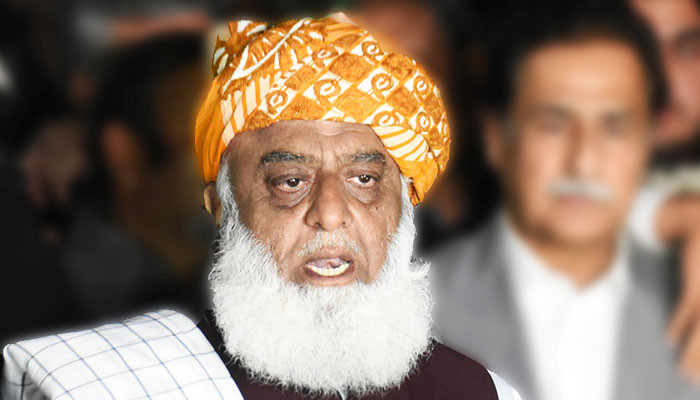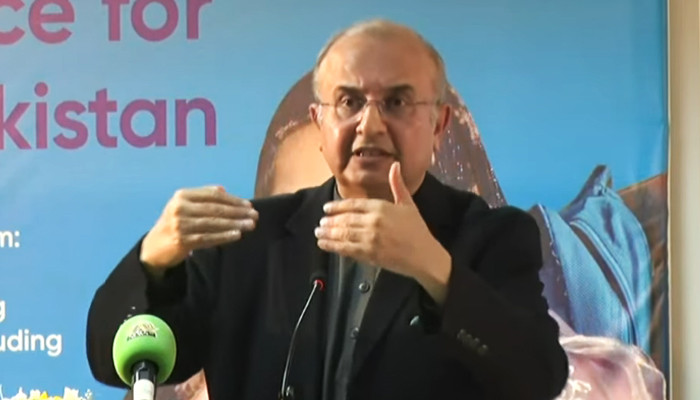Health
Judiciary farm
字号+ Author:Smart News Source:US 2025-01-11 07:16:36 I want to comment(0)
A MONTH has passed since the government altered the scheme and practice of the superior judiciary via the to the Constitution. These amendments were first attempted in the dark of the night, without sharing even a draft of how our social contract was to be altered. How a parliamentary pick-and-drop service was run by the hybrids and championed by their minions has already been commented on extensively. We were that this was in part to protect the democratic process from maverick judges. We were told these changes were necessary, and would allow for a streamlining of all judicial decision-making, reduce delays and pendencies in courts and help the judges focus on their jobs rather than the distractions of political activism. We were told that these amendments weren’t the empire simply striking back when it found a willing individual in the chief justice’s seat, but a necessary balancing of an oft-perverted situation of power that the judiciary had created through arbitrariness and excess. Consider, then, the state of the judiciary after the amendments made in its structure have been allowed to take root. The ‘ ’ of the Supreme Court has been assembled without any reasoning given as to why the members picked made the cut and why those ignored did not. The arbitrary power of the chief justice in making benches, the structuring of which this amendment was deemed necessary, has been replaced by the arbitrary power of the executive to constitute the benches. Introduced into the mix is the inherent conflict of interest that the government is choosing which senior judges get to decide cases in which by far the most frequent respondent is the government itself. Consider the state of the judiciary after the amendments have been allowed to take root. On the competence and efficiency front, these constitutional benches have worked for more than 30 days and are yet to author a judgement longer than 30 lines, or to list the most important constitutional questions, including those asked of the amendments that gave rise to their existence. The against the military trials of civilians wait, with people behind bars despite a declaring their incarceration illegal, whilst the new constitutional judges are busy hearing suo motu cases where the litigants are dead, or regime policies, under challenge now, are reversed or rendered redundant. On the judicial activism front, the constitutional judges have remarked that they continue to enjoy suo motu powers. We have to rely on the reporting of their remarks because, on the transparency front, livestreaming of these proceedings are currently not available, although it is an established position that access of the public via livestreaming in matters involving fundamental constitutional questions is mandatory. When it comes to appointing more judges, things aren’t looking better. Lawyers are nominated for elevation to the respective superior courts. The Judicial Commission is then made to realise by the country’s senior-most judge that the very amendment to the Constitution by which it itself is born contains an express command to create a set of rules of procedure, including a structure for criteria for . So the appointments are put off until the rules can be framed to measure the candidates against. How seriously this process of rule-making is being taken — as the one way to end arbitrary appointments — is best exemplified by the timelines given by the Judicial Commission. The deadline afforded to all members to submit names of possible candidates to the judiciary for consideration falls before the date on which the rules are to be finalised. In this first round, we seem to be replacing the arbitrary method of judicial nomination with a nomination by roulette. Pick people who you think will meet the standard which we will later set for them. Meanwhile, why doesn’t everyone throw in a few names and let’s spin the wheel a bit? Meanwhile, the country’s senior-most judge, who has worked for over a year on developing the rules and standards by which judges ought to be appointed, and who has headed a committee which finalised such a set of rules and submitted them to the last chief justice for approval, has been left out of the now nominated by the Judicial Commission to make rules, which will come after the nominations of the would-be judges measured against those rules. The effects of the amendment to end judicial arbitrariness are best exemplified by the happenings in the . Once the Sindh Assembly triggered provincial constitutional benches, the Judicial Commission met and voted to ignore the top eight judges of the court when constituting the benches. The vote passed only because two Supreme Court constitutional bench members in the commission voted in favour of the executive’s recommendation, against the vote of the province’s chief justice, who is best placed to make such a determination, and against their own chief justice (of Pakistan). No reasons were given by any on the commission as to why this decision was made and why these judges were ignored. Meanwhile, the head of the constitutional bench in the Supreme Court needed an to hear the military trials case, and because the amendment requires provincial seniority to be respected, he was to pick the next senior-most judge in line. He did not, skipping the next two judges from Punjab to replace Justice Ayesha Malik. No reasons were given as to how this could be done, or why the need was felt in the first place. Already slow-crawling cases have ground to a halt. To scratch an itchy spot, we have cut off an arm. Half of us are making do with the other arm, pretending it was the only useful one anyway. The other half are waiting to see if it will grow back. Meanwhile, our neck has now begun to itch. X:
1.This site adheres to industry standards, and any reposted articles will clearly indicate the author and source;
 Related Articles
Related Articles-
پہلی ٹیسٹ: پاکستان کے 211 کے بعد جنوبی افریقہ کے تین کھلاڑی آؤٹ، مارکرام نے مزاحمت کی
2025-01-11 07:03
-
Human Metapneumovirus present in Pakistan since 2001: NIH
2025-01-11 06:02
-
Human Metapneumovirus present in Pakistan since 2001: NIH
2025-01-11 05:49
-
Human Metapneumovirus present in Pakistan since 2001: NIH
2025-01-11 05:35
 User Reviews
User Reviews Recommended Reads
Recommended Reads Hot Information
Hot Information- بابر اعظم آئی سی سی مینز ٹی ٹوئنٹی کرکٹر آف دی ایئر ایوارڈ کے لیے نامزد
- Human Metapneumovirus present in Pakistan since 2001: NIH
- Human Metapneumovirus present in Pakistan since 2001: NIH
- Human Metapneumovirus present in Pakistan since 2001: NIH
- پہلی ٹیسٹ: پاکستان کے 211 کے بعد جنوبی افریقہ کے تین کھلاڑی آؤٹ، مارکرام نے مزاحمت کی
- Human Metapneumovirus present in Pakistan since 2001: NIH
- Human Metapneumovirus present in Pakistan since 2001: NIH
- Human Metapneumovirus present in Pakistan since 2001: NIH
- آسٹریلیا نے مارش کو ڈراپ کیا، پانچویں بھارتی ٹیسٹ کے لیے ویبسٹر کو ڈیبیو دیا
 Abont US
Abont US
Follow our WhatasApp account to stay updated with the latest exciting content












